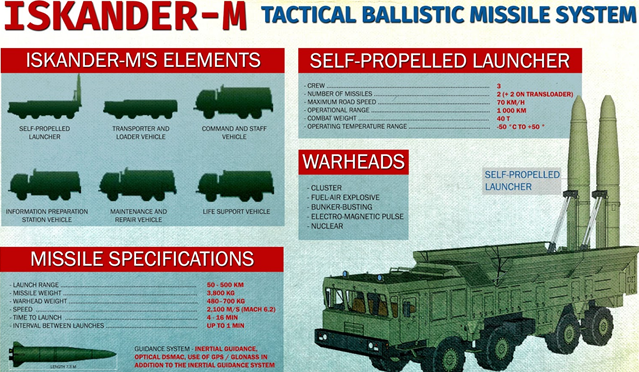Iskander-M nuclear-capable missiles
Context
Russia has promised Belarus Iskander-M nuclear-capable missiles.
What is Iskander-M systems?
- The Iskander-M is a mobile guided missile system codenamed "SS-26 Stone" by NATO, which replaced the Soviet "Scud."
- Iskander-M is a term used by Russia to define both the transporter-erector launch system and the short-range ballistic missile (SRBM) it fires.
- Iskander-M systems can fire ballistic and cruise missiles, both conventional and nuclear types.
- The system can also fire ground-launched cruise missiles (GLCMs) – the SSC-7 and the SSC-8.
- Range: The systems have a range of up to 500km (310 miles).
- The Iskander-M system has been exclusively used by the Russian military.
- It can carry conventional and nuclear warheads up to 700 kg and employs a maneuverable re-entry vehicle (MaRV) and decoys to defeat theater missile defence systems.
- Conventional warheads that can be equipped by the Iskander include cluster warheads, fuel-air explosives, bunker-busters, and electromagnetic pulse (EMP) warheads.

Versions of missile
There are two versions of the missile
- The Iskander-M
- The Iskander-E: It is solely for export
Background
|

